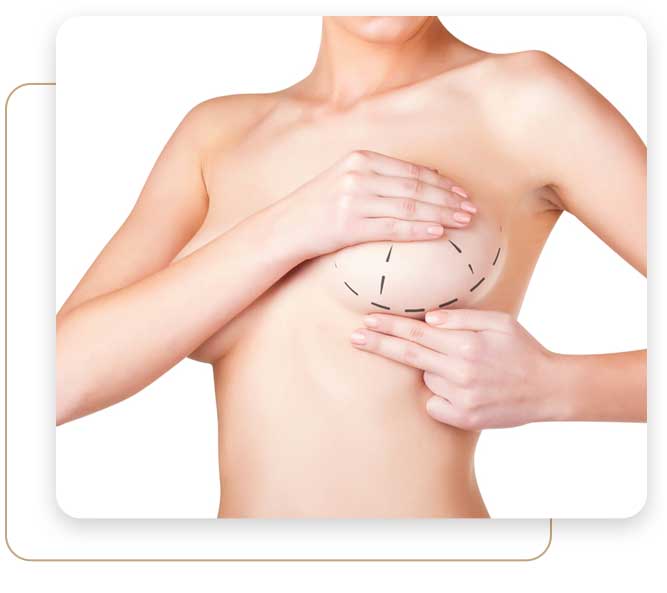
Başlıklar

Breast repair is carried out weeks, months or even years after the completion of your cancer treatment.
Breast Reconstruction Options
Patient-Specific Treatment; Each treatment should be unique to the patient and suitable for the patient. Therefore;
*Your health and lifestyle
*Your body type,
*Your breast size,
*The amount of tissue and skin you have left and
*Your personal preference
*All these things are considered when the method selecting.

During this procedure, a piece of skin and muscle is removed from our back or under your arm, bringing it to the breast area where it is used to repair your breasts. Since the skin and muscle on your back are normally quite thin, it is usually used with a breast implant with this method to give your new breasts a fuller shape.
It is one of the options in patients where abdominal tissues are suitable or do not want to be breasted with prosthesis. TRAM flap (transverse rectus abdominus musculoscular flap) uses fat, skin and muscle taken from a woman’s abdomen to reconstruct the breast. The transported tissues are shaped and transformed into breast busts.
The most commonly used technique is to first expand the skin with a different application and then put a permanent prosthesis in the created area. In this surgery, a tissue expander is first placed under the chest wall to expand the skin in your breast area. After approximately a few months, after sufficient expansion of your skin, a tissue expander is removed with a secondary surgery and a more permanent prosthesis is inserted. Some tissue extenders are designed to be permanently released.
If the tissues used are not suitable, tissue transplants that can usually be stored with laundry from other parts of the body are carried by microsurgery methods and breast tissue is tried to be created.
Fat tissue taken from other parts of the body is transferred to the breast area after undergoing certain procedures. It is usually not possible to carry enough fat tissue to form an average breast volume. This method is mostly used for minor postoperative corrections or auxiliary treatments in patients where a small part of the breast is removed.
It is the final stage in the creation of breasts. It is applied when the breast touch is formed and finalized by the appropriate method and asymmetry is removed with the opposite breast. It is usually performed with local anesthesia, which does not require the patient to sleep. The creation of areola, which is the colored part of the nipple and surrounding area, can also be performed with one or two surgeries according to preference.
Several surgeries are required for breast reconstruction. The first surgeries are the most difficult; second surgeries are easier. These include removing the tissue expander and putting a prosthesis or breast tip and areola reconstruction. Most often, in order for the newly made udder to adapt to the normal udder on the opposite side, the normal udder may need to be slightly reduced, removed or enlarged. However, it should be kept in mind that scars are also formed in these surgeries.
Unsuccessful surgery and tissue loss are the most feared problems and are possible in these surgeries as in any surgery. Other than this, small wound healing problems, delay of wound healing, postoperative pain are usually problems that can be easily treated.
It may take an average of 6 weeks to return to your normal daily life after simultaneous breast repair with mastectomy (breast removal) or only tissue and breast repair surgery. In prosthesis surgery, this period may be shorter. The tissue created by reconstruction does not have a normal sense; however, some sense may come over time. Most of the time, the scars may fade wither, or they may become more pronounced by swelling and blushing. In this case, additional treatments will be required for your scars. Although the tracks usually fade and become less pronounced in a few years, the traces never disappear completely.
Remember that these surgeries are applied to give you a more comfortable life and they are surgeries with high success rates and patient satisfaction…
